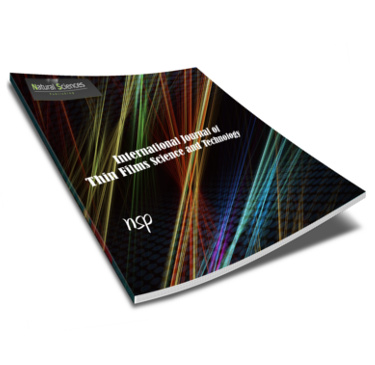International Journal of Thin Film Science and Technology

Abstract
: In this study, the Organic Perovskite solar cells have been of great interest due to their low cost and great efficiency. The perovskite materials have huge charge carrier mobility with greater stability than organic materials, metal oxides have shown great promise. In this research, because of its improved performance, we used PCBM represent as Electron Transport layer-ETL, NiO is Hole Transport Material (HTM), and CH3NH3PbI3 as an absorber. His work is concerned with the design and analysis of lead-based perovskite solar cell model with the versatile FTO/PCBM/CH3NH3PbI3/NiO/Pt architecture. Via system simulation, we researched the effects of some parameters on the performance of the solar cell device. Solar cell efficiency was found to be related to the perovskite and PCBM layer thicknesses. The tunable performance of organic perovskite solar cells with the power conversion efficiency (PCE) of 47.49% was reached when a defect of CH3NH3PbI3was 1 × 10^10 cm−3, short circuit current density (Jsc) 46.214 mA/cm2, open-circuit voltage (Voc) 1.397 V, fill factor(FF) 73.52% respectively. These results showed the perovskits solar cell was the best optimal for perovskite solar cells with high stability and efficiency.
Recommended Citation
K. Mejbel, Hussein; M. AbdulAlmohsin, Samir; and E. Tareq, Dhuha
(2023)
"Study the Defect of Organic Electron Transport Materials of Perovskites Solar Cell,"
International Journal of Thin Film Science and Technology: Vol. 12
:
Iss.
3
, PP -.
Available at:
https://digitalcommons.aaru.edu.jo/ijtfst/vol12/iss3/10

